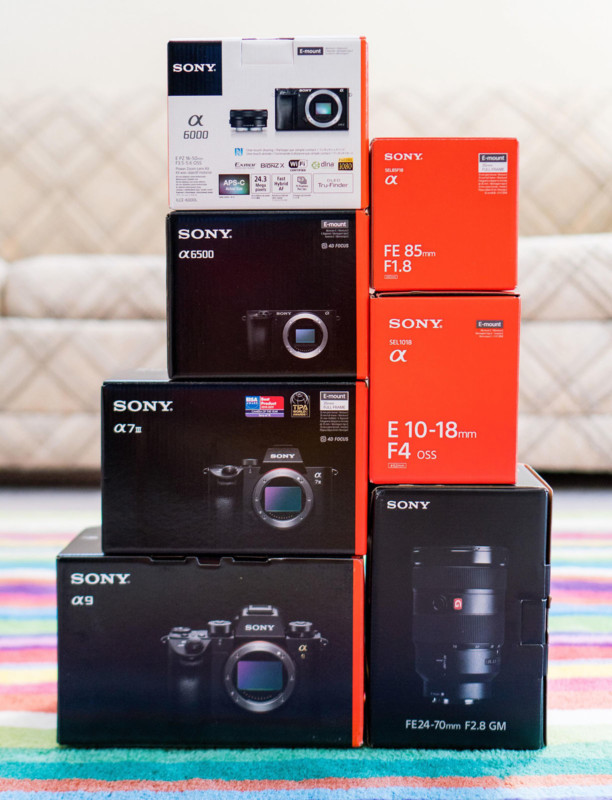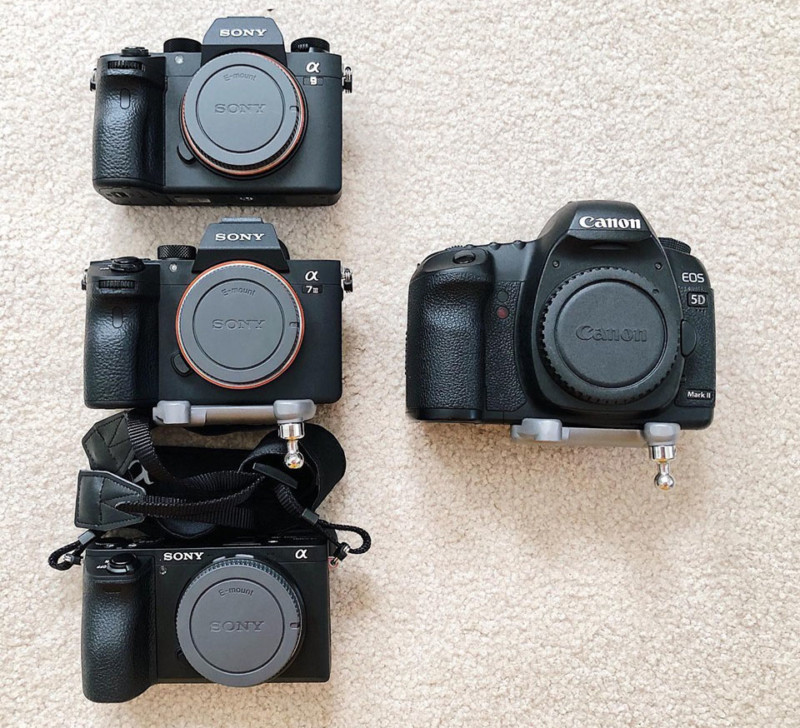This $10,000 in Sony Gear Cost $500 Thanks to Amazon’s Glitch
![]()
Amazon sparked a frenzy and made headlines last week after an apparent pricing glitch allowed customers to buy extremely expensive cameras and lenses, including one worth $13,000, for just $94.48 each. Today we have a closer look at how one photographer made out like a bandit.
While it was assumed that the in-transit shipments were essentially guaranteed to arrive in their lucky purchasers’ hands, many people believed that Amazon would catch wind of the story and cancel the backordered orders to reverse and reduce the mistake.
But it seems that has not been the case: Amazon appears to still be honoring the unbelievable price errors by shipping out the backordered products as inventory is replenished.
One photographer we spoke to for the original report ordered several Sony cameras and lenses during the glitch before Amazon froze his account for suspicious activity. A $2,000 Sony a7 III and $850 Sony 10-18mm arrived on his doorstep the next day.
![]()
While Amazon was telling the photographer that some of his other orders would arrive within days, the retailer stated that the Sony a9 he ordered was backordered until August. Fully expecting that the a9 order could be canceled before the camera was back in stock, the photographer was, needless to say, quite happy when the a9 showed up this week, days ahead of schedule.
![]()
![]()
In the end, the photographer purchased two $550 Sony a6000 and 16-50mm kits, an $850 Sony 10-18mm, an $1,100 Sony a6500, a $2,000 Sony a7 III, a $2,200 Sony 24-70mm f/2.8, and a $3,500 Sony a9.
Two of the camera and lens sets were also purchased as bundles, so the photographer paid a total of $500 (plus California sales tax) for a whopping $10,750 worth of camera gear.
That’s 95% off.

Previously a Canon DSLR shooter, the photographer is now selling the majority of his Canon gear to switch over to Sony.

The photographer tells PetaPixel that’s planning to sell the two a6000s and the a9 while keeping a7 III, a6500, and all the lenses.
Update on 7/27/19: Photographer (and director, actor, playwright) David Harlan shares this story of his Prime Day experience with us:
For me, this is kind of a lottery win. I lost my big corporate job two years ago and I’ve been making a living through various means – including photography – since then. Not a sob story – I’m happy to be doing my various artistic pursuits – Theatre, photography, sound design and writing – and making a living. But my current “mortgage-payment” source of income is as a lecturer at a state university, on a semester-by-semester contract. This job will disappear at a moment’s notice at some point. So, yeah, like a lot of people these days I’m not in the most stable employment situation.
Anyway, I’m a Sony mirrorless shooter. My everyday carry has been an A7RIII primary with a 24-105 f4, an A7RII secondary with an ultrawide prime mounted and another prime (varies on my mood) in the bag . I have kept a wish list of my dream system since I switched to Sony a few years ago. I’ve been happy with my gear, but I’m always looking for ways to maximize my flexibility and creativity. So…
I go to Amazon at midnight on Prime day and the first thing I look at is the DJI drone I’ve been looking at for a project I have coming up. I see what I think is a special $94 discount off the current price for prime members and I add it to my cart and head to checkout to confirm that it’s below my threshold price. That’s when I see that it wasn’t a $94 discount, but a $94 price. I immediately pushed the checkout button and considered myself lucky.
Not thinking that I’d score any more deals, but sort of doing due diligence, I checked out my Sony wishlist. I saw the A7RIII body at the $94 price and bought it, knowing that I could sell my A7RII backup. At this point, I went to my Amazon account to confirm that the two orders did go through with the $94 price and that they were new items sold by Amazon. Yep. So then I started through my lens list. 16-35 f2.8 GM, $94, bought. 70-200 f2.8 GM, $94, bought. 24-70 f2.8 GM $94, bought. I then took a breath and checked my account again. I mean, if I actually received the purchases I just made, I’d have my dream setup. I thought for a minute or two and then checked the last item on my lens wish list, the 85mm f1.4 GM… yeah. $94. Bought.
At this point I’m kind of freaking out. I remember looking at a few more items – and even seeing at least a couple more at the $94 price – but at the same time I’m running the numbers in my head, realizing that if I actually get this stuff for $600, not only do I have a nearly perfect camera system, but if things go bad for me (and hey, semester-to-semester contract at a state university so, yeah…), I’ll be able to pay my mortgage for a while by selling items one by one… So, I stop at six purchases. Because I’m this kind of person, I do the calculation and confirm that at the most recent “normal” Amazon prices, I’ve just bought $12,200 worth of equipment for $600.
Over the next couple of days, I obsessively watch my account to see if these things are going to ship. One by one, they do. And they all arrived over the span of around a week. Once the 16-35 arrived, I immediately sold one of the wide primes that I know I’ll never use now. That sale financed the whole venture and also gave me a month of grocery money.
![]()
![]()
P.S. If you’re one of the lucky people who scored a major haul during this bizarre Amazon Prime Day event, please send us photos and details of what you received if you’d like to be included in updates to this post. While there are crazy reports out there of what people managed to order (i.e. 5 Canon 800mm lenses worth a combined total of $65,000), most stories are unverified, and it’s still unclear what the scope of this error was (though we do know it spanned pretty much all the major camera brands).